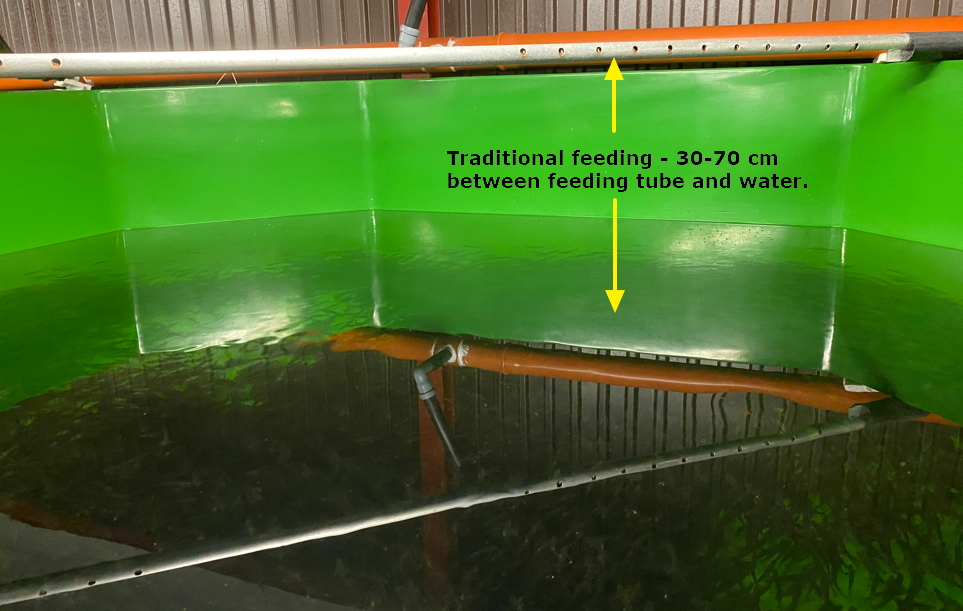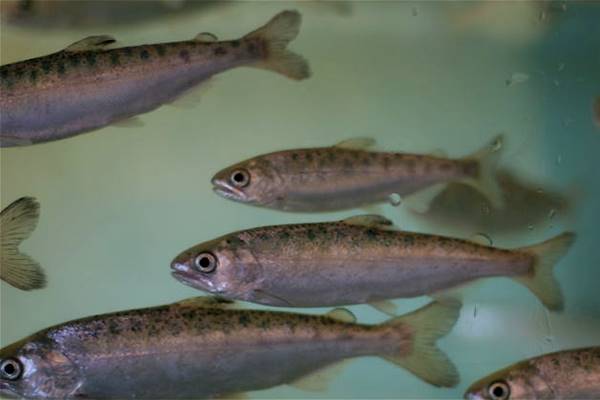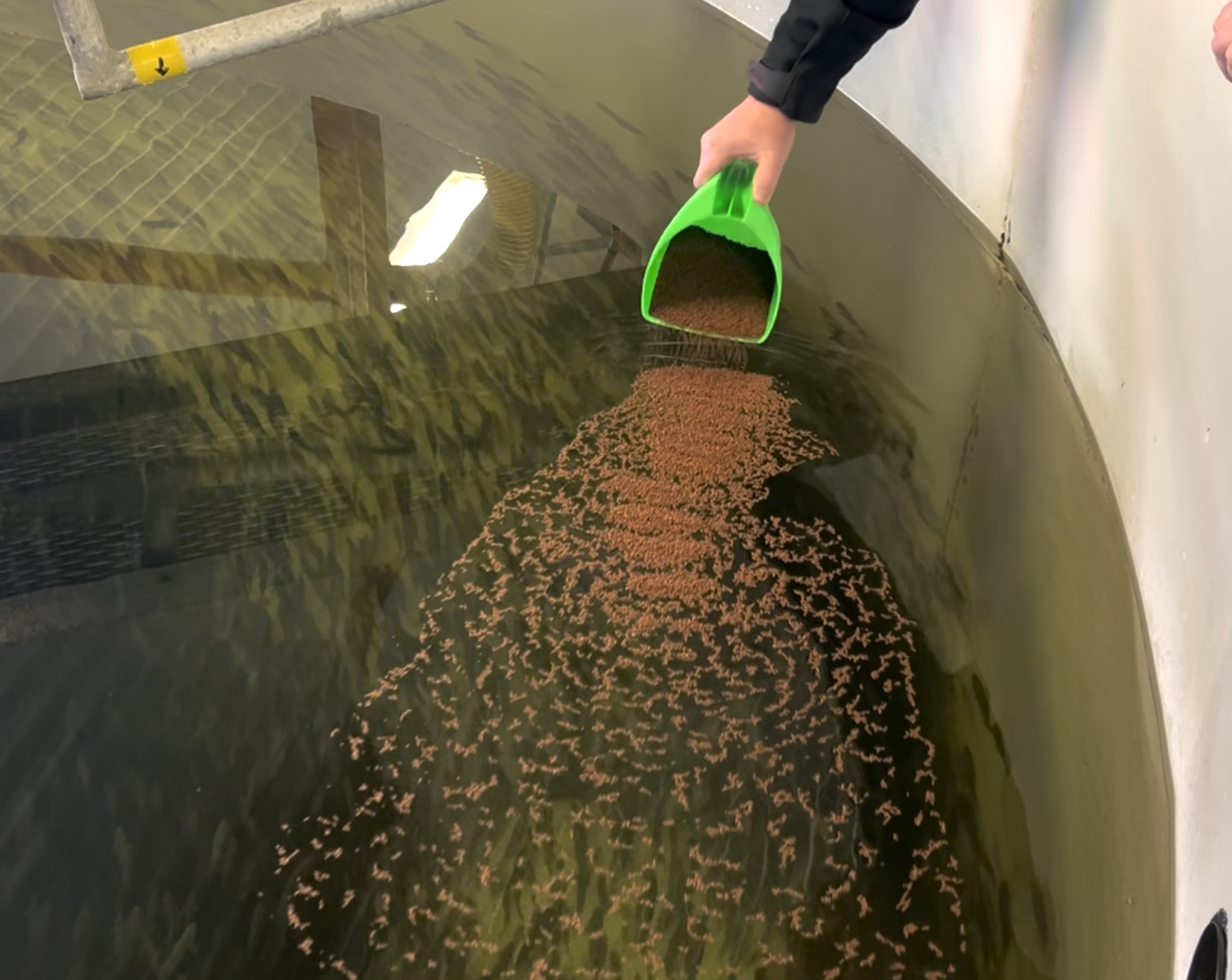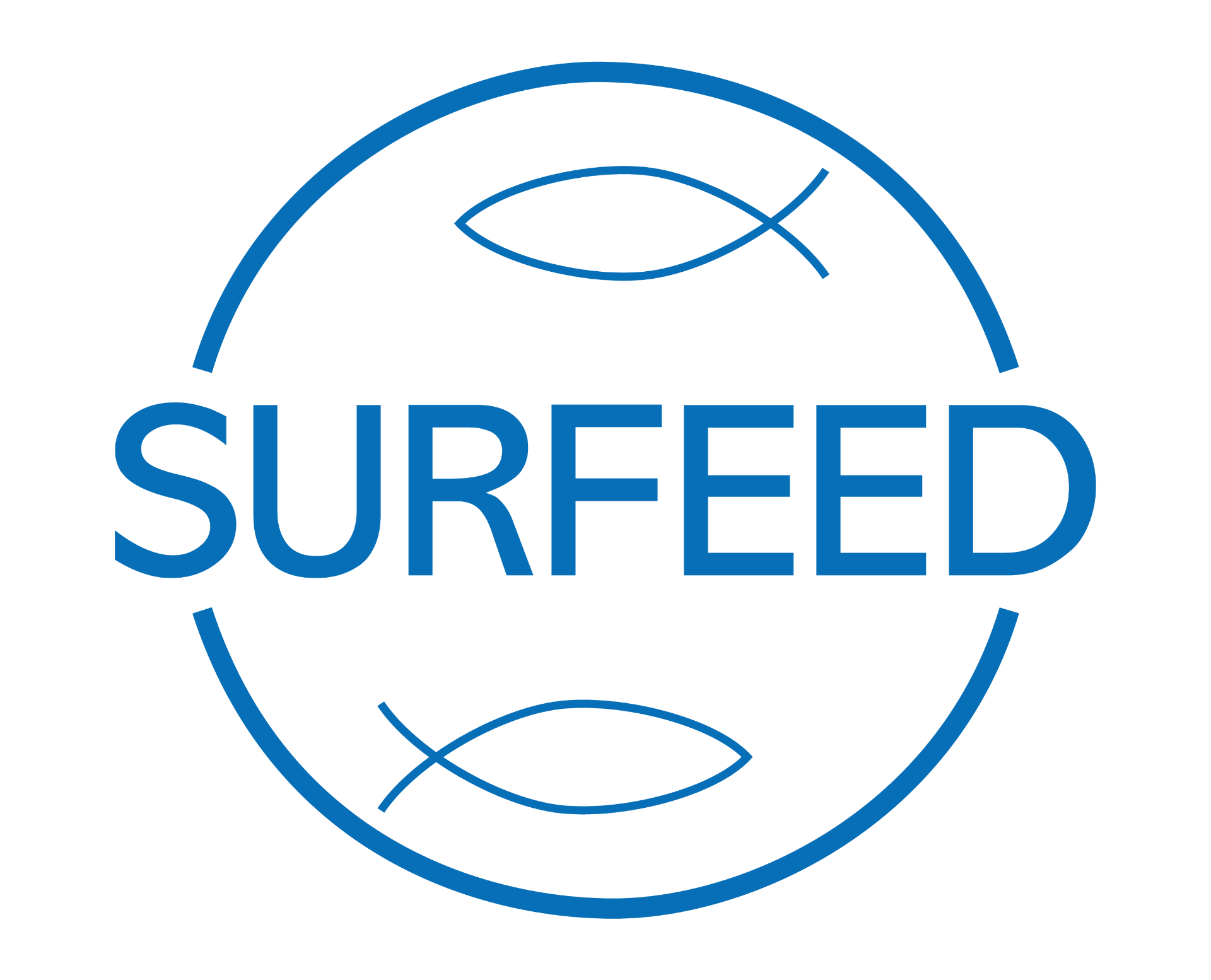The challenge



Today's technology:
Current fish feeding technology normally sprinkle the feed into the breeding tank from a height of 30-70 cm.
This causes the feed to break the surface and quickly descend to the bottom of the tank. With the current setup, the largest and most aggressive fish that are highest in the water masses secure the best access to feed, while the smaller fish have less access to food.
Consequences of rapidly sinking fish feed:
The fight for the feed causes damage to the fish (eyes, gill covers and dorsal fins), so that the damaged fish must be discarded.
In addition, the feed that falls to the bottom is wasted. Uneven feeding causes the growth of the fish to become less homogeneous, so that the largest fish take the lead and the rest lag behind.
Uneven growth rates also trigger a need for more frequent sorting and handling along the way towards the smolt phase. Unfortunately, increased mortality throughout the life cycle of the fish comes as a natural consequence of this setup.
Temporary, but proven solution:
Hand feeding counteracts the aforementioned effects by carefully placing the feed by hand on the water surface inside the fish tank.
This method leads to better distribution of the feed in the tank, while it also sinks more slowly to the bottom. This gives the fish more equal access to feed, which results in less aggression, a more even growth rate, reduced feed waste and less damage to the fish (increased survival).
The method isn't without its disadvantages, as the mere presence of the crew right by the tank causes a lot of stress for the fish. Often a new feeding cycle will start before the fish has managed to calm down after the previous round. In addition, the manual hand feeding method is far too labor-intensive and resource-demanding to be a real solution to the problem.
